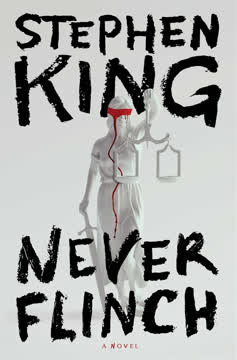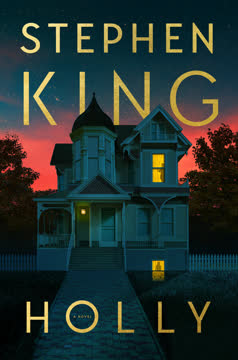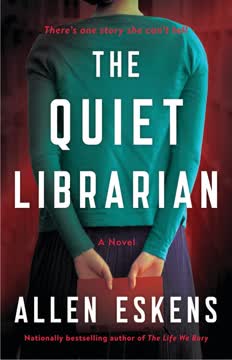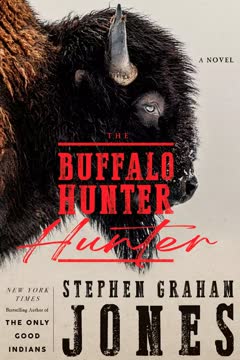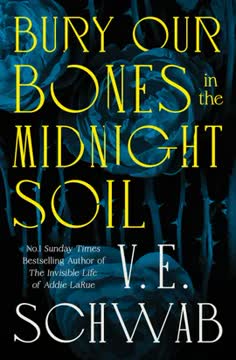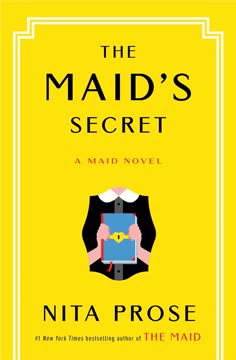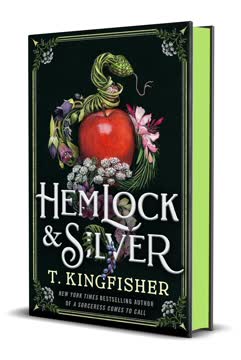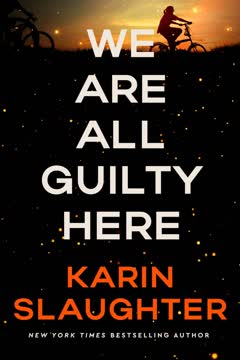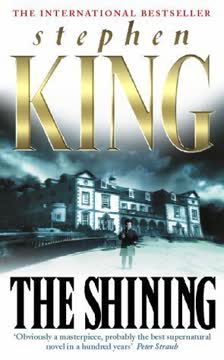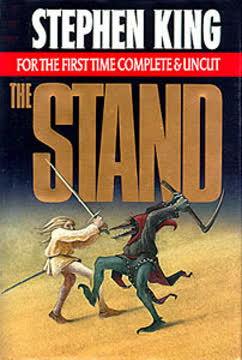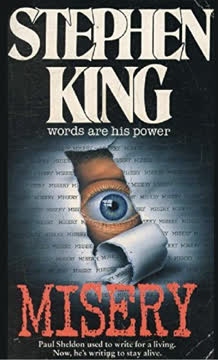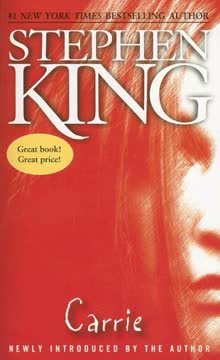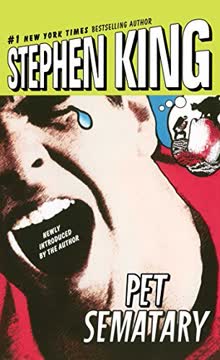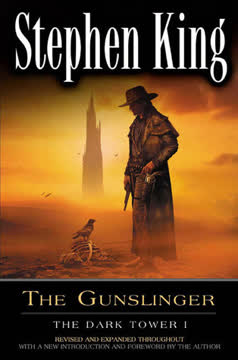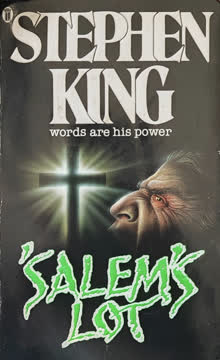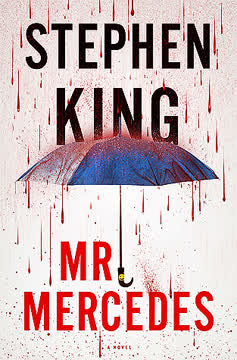Plot Summary
Basement Confessions and Lost Names
In the dreary spring of Buckeye City, a group of recovering addicts and alcoholics meet in the basement of a church, seeking solace and structure. Among them is Trig, a man haunted by his past and the recent murder of an acquaintance, Alan Duffrey, in prison. Trig's real identity is carefully hidden, his attendance at out-of-town meetings a shield against recognition. The city's weather is as bleak as the mood, and the group's rituals—coffee, cigarettes, and confessions—are a fragile bulwark against relapse. Trig's internal struggle is mirrored by the city's own inability to move past its mistakes, and the seeds of a larger reckoning are sown in these anonymous, desperate gatherings.
The Letter: Thirteen and One
Detective Izzy Jaynes receives a cryptic letter signed "Bill Wilson" (the founder of AA), promising to kill thirteen innocents and one guilty party as atonement for the wrongful death of Alan Duffrey. The letter's logic is twisted: the innocent must suffer so the truly guilty feel the weight of their actions. The police, including Izzy and her partner Tom Atta, debate whether the threat is real or the work of a crank. The letter's reference to the Blackstone Rule and its calculated, businesslike tone suggest a perpetrator who is both intelligent and deeply disturbed. The city's legal and recovery communities are now on edge, and the hunt for "Bill Wilson" begins.
Guilt's Ripple Effect
Alan Duffrey's story unfolds: a bank officer, framed for child pornography by a jealous colleague, Cary Tolliver, who confesses only after being diagnosed with terminal cancer. Duffrey's conviction, based on planted evidence and prosecutorial ambition, leads to his murder in prison. The revelation of his innocence sends shockwaves through the community, especially among those involved in his trial—jurors, judge, prosecutor, and defense. The letter-writer's logic is that these people, by their actions or inactions, are complicit in Duffrey's death. The city's institutions—police, courts, and media—are forced to confront their own roles in perpetuating injustice.
The Stalker in the Crowd
Kate McKay, a charismatic feminist author and activist, embarks on a national tour to promote her new book. Her assistant, Corrie, is attacked with fake acid by a religious zealot who mistakes her for Kate. The stalker, later identified as Christopher/Chrissy Stewart, is driven by fundamentalist rage and a fractured identity. As Kate's tour continues, threats escalate: anthrax-laced mail, public confrontations, and a relentless campaign of intimidation. Holly Gibney, a private investigator with her own scars, is hired as Kate's bodyguard. The tension between public advocacy and personal vulnerability becomes a central theme, as does the toxic intersection of politics, misogyny, and fanaticism.
The Surrogate Juror Murders
A series of seemingly random murders rocks Buckeye City. Each victim is found with a slip of paper bearing the name of a juror from the Duffrey trial. The killer, Trig, is methodical and remorseless, targeting innocents as proxies for those he deems truly guilty. The police struggle to connect the dots, hampered by the killer's anonymity and the randomness of his targets. The city's recovery community becomes a focus of the investigation, as the killer's use of AA/NA language and rituals provides both clues and red herrings. The psychological toll on the jurors—some of whom commit suicide—underscores the far-reaching impact of guilt and the impossibility of true atonement.
The Game Must Go On
Despite the mounting body count, the city's annual Guns and Hoses charity softball game between police and firefighters is set to proceed, a symbol of civic pride and willful denial. Sista Bessie, a legendary soul singer, is invited to perform the National Anthem, drawing even more attention to the event. The game becomes a microcosm of the city's tensions: competition, bravado, and the refusal to confront uncomfortable truths. The police and fire departments are distracted, their focus split between the game and the ongoing investigation. The killer, meanwhile, sees the event as an opportunity for a grand, final act.
Bait and Traps Set
Trig's plan escalates: he kidnaps Corrie and Barbara (Kate's assistant and a young poet connected to Sista Bessie), using them as bait to lure Kate and Sista Bessie to the condemned Holman Hockey Rink. He manipulates their guilt and love for others, forcing them to choose between self-preservation and sacrifice. Simultaneously, Chrissy Stewart, the religiously motivated stalker, is also drawn to the rink, hoping to kill Kate. The convergence of these threats creates a powder keg of violence, with the city's institutions—police, media, and community—unaware of the impending disaster.
The Holman Rink Inferno
At the Holman Rink, Trig binds his captives and prepares to set the building ablaze, intending a "Viking funeral" for his proxies. Kate, Corrie, and Barbara face death, their fates intertwined by the killer's warped sense of justice. Chrissy Stewart arrives, intent on her own act of violence, but is killed in the chaos. Holly, guided by intuition and a tracking device, arrives in time to confront Trig. In a desperate struggle, she and Jerome (Barbara's brother) manage to subdue Trig and rescue the captives as the rink goes up in flames. The fire becomes both literal and symbolic, consuming the city's guilt and secrets.
The Riot at Dingley Park
While the drama at the rink unfolds, the Guns and Hoses game descends into chaos. A hard slide and a broken shoulder spark a riot between police and firefighters, fueled by alcohol, rivalry, and the city's underlying tensions. The riot becomes a media spectacle, overshadowing the heroism and tragedy occurring nearby. The city's leaders—police and fire chiefs—are disgraced, and the event becomes a symbol of institutional failure and misplaced priorities.
Unmasking Trig and Stewart
In the aftermath, the true identities and motivations of the killers are revealed. Trig is unmasked as Donald Gibson, the Mingo's Program Director and a member of the Duffrey jury, driven by a lifetime of abuse, addiction, and guilt. Chrissy Stewart's story emerges as one of religious trauma, gender dysphoria, and manipulation by a fundamentalist church. The city grapples with the complexity of evil: not monsters, but broken people shaped by circumstance and choice. The survivors—Kate, Corrie, Barbara, Holly, and others—are left to process their trauma and the ambiguous nature of justice.
Aftermath: Scars and Songs
The city begins to heal, but scars remain. Kate's tour becomes a national movement, her battered face a symbol of resilience and the cost of speaking out. Corrie returns home, changed but unbroken. Barbara, now a celebrated poet and performer, finds solace in music and friendship with Sista Bessie. Holly, haunted by the violence she was forced to commit, steps away from bodyguard work, seeking peace in small pleasures and old friendships. The city's institutions undergo scrutiny and reform, but the deeper wounds—of guilt, denial, and the hunger for atonement—linger.
The Cost of Not Flinching
The novel's title becomes a refrain: never flinch, never turn away. For some, this means facing danger head-on; for others, it means refusing to acknowledge their own complicity. The survivors are forced to reckon with the choices they made—acts of courage, moments of hesitation, and the lines they crossed. The city, too, must confront its own failures: the rush to judgment, the allure of spectacle, and the ease with which guilt is shifted onto others. The lesson is clear: true justice requires both courage and humility, and the refusal to flinch from uncomfortable truths.
The Church of Holy War
The Real Christ Holy Church, which radicalized Chrissy Stewart, is exposed as a hotbed of fanaticism and violence. Its leaders, including Deacon Fallowes, evade justice through legal maneuvering, but the church's arsenal and rhetoric are laid bare. The novel explores how institutions—religious, legal, and social—can nurture both healing and harm, depending on who wields their power. The intersection of personal trauma and collective ideology becomes a crucible for violence, with innocent lives caught in the crossfire.
The Outsider Within
Throughout the story, the line between victim and perpetrator blurs. Trig, Chrissy, and even some of the jurors are outsiders within their own lives, shaped by forces beyond their control. The novel draws on King's recurring theme: evil is not always an external force, but something that grows within, fed by pain, fear, and the refusal to confront the past. The survivors' ability to empathize—even with those who hurt them—becomes both a strength and a burden.
The Last Lunch in Dingley Park
In the novel's coda, Holly and Izzy share a quiet lunch in Dingley Park, reflecting on the events that have shaken their city and their lives. The park, once a site of violence and chaos, becomes a place of tentative healing. The conversation turns to the future: the need for accountability, the importance of friendship, and the possibility of redemption. The story ends not with easy answers, but with the recognition that change is slow, justice is imperfect, and the refusal to flinch—from pain, from truth, from each other—is the only way forward.
Characters
Trig / Donald Gibson
Trig, whose real name is Donald Gibson, is a man broken by childhood abuse, addiction, and the guilt of having helped convict an innocent man. His psychological torment is channeled into a campaign of surrogate murders, targeting random innocents as proxies for the jurors, judge, and prosecutor in the Duffrey case. Trig's dual identity—publicly a respectable program director, privately a killer—reflects his fractured psyche. His relationship with his dead father, whose voice he hears and whose approval he craves, drives his actions. Trig's journey is one of self-destruction, rationalized as atonement but ultimately revealed as a desperate attempt to impose meaning on his pain. His final act—a planned mass murder and self-immolation—exposes the emptiness at the heart of his quest for justice.
Kate McKay
Kate is a bestselling feminist author and public speaker, known for her wit, courage, and refusal to back down. She is both idolized and reviled, her public persona a shield against the threats and violence she faces. Kate's relationship with her assistant Corrie and her bodyguard Holly reveals her complexity: demanding, sometimes self-absorbed, but also fiercely loyal and principled. Her willingness to risk her life for her cause is both admirable and reckless, and her journey forces her to confront the limits of her own invulnerability. Kate's survival—and her battered, iconic image—galvanizes a national movement, but leaves her personally scarred and changed.
Holly Gibney
Holly is a private investigator with a history of trauma and a deep well of empathy. Her role as Kate's bodyguard thrusts her into a world of public spectacle and private danger. Holly's psychological insight and intuition are her greatest strengths, but her self-doubt and aversion to violence make her an unlikely action hero. Forced to kill in order to save others, Holly is left to grapple with the moral cost of survival. Her relationships—with Izzy, Jerome, Barbara, and others—anchor her, and her refusal to flinch from pain or truth becomes the novel's moral center.
Corrie Anderson
Corrie is Kate's young, capable assistant, whose journey from starstruck admirer to trauma survivor mirrors the novel's themes of innocence lost and resilience gained. Attacked, kidnapped, and nearly killed, Corrie's ordeal exposes the vulnerability of those who stand beside public figures. Her loyalty to Kate is tested by the latter's flaws, but Corrie emerges with a deeper understanding of both her own strength and the costs of proximity to power.
Barbara Robinson
Barbara is a young poet whose work and spirit draw the admiration of Sista Bessie and the affection of her brother Jerome. Her transformation from observer to performer, and her survival of the Holman Rink ordeal, reflect the novel's exploration of art, identity, and the power of community. Barbara's friendship with Holly and her bond with Sista Bessie provide moments of grace and hope amid the darkness.
Sista Bessie / Betty Brady
Sista Bessie is a soul and gospel icon, drawn into the city's drama by her willingness to perform at the charity game and her friendship with Barbara. Her warmth, humor, and faith are tested by the violence that engulfs her, but her courage and compassion shine through. Sista Bessie's presence brings both healing and risk, and her actions in the climax are pivotal to the survival of the others.
Christopher/Chrissy Stewart
Christopher Stewart, also known as Chrissy, is a product of religious extremism and gender dysphoria, manipulated by the Real Christ Holy Church. Their campaign against Kate is driven by a toxic mix of personal pain, indoctrination, and a desperate need for meaning. Chrissy's dual identity—male and female, victim and perpetrator—embodies the novel's themes of otherness and the dangers of absolutism. Their death is both tragic and inevitable, a casualty of forces beyond their control.
Izzy Jaynes
Izzy is a dedicated police detective, torn between her duty to the city and the distractions of spectacle (the charity game) and bureaucracy. Her partnership with Tom Atta and her friendship with Holly provide stability, but she is frustrated by the limitations of her role. Izzy's injury in the riot and her reflections in the aftermath highlight the costs of institutional failure and the need for personal accountability.
Jerome Robinson
Jerome is Barbara's brother, a writer and occasional investigator. His involvement in the rescue at the Holman Rink and his support for Barbara and Holly underscore the importance of family and chosen community. Jerome's journey from bystander to participant mirrors the novel's call to action: the refusal to flinch, even when the cost is high.
Deacon Andrew Fallowes
Fallowes is a leader of the Real Christ Holy Church, whose rhetoric and actions radicalize Chrissy Stewart and others. His ability to evade justice, despite clear complicity in violence, reflects the novel's critique of institutions that protect their own at the expense of the vulnerable. Fallowes is both a true believer and a cynic, using faith as a weapon and shield.
Plot Devices
Dual Narratives and Converging Threats
The novel weaves together two main threads: the surrogate juror murders and the stalking of Kate McKay. These narratives run in parallel, each with its own cast of characters, motivations, and psychological stakes. The convergence of these threats at the Holman Rink creates a climactic collision, forcing characters from different worlds to confront their own guilt, courage, and capacity for violence. The use of dual perspectives—public spectacle and private trauma—allows King to explore the interplay between individual and collective responsibility.
Guilt, Atonement, and Proxy Punishment
The central plot device is the idea of surrogate punishment: innocents are killed as proxies for the guilty, forcing those responsible for Duffrey's death to confront the consequences of their actions. This logic is both compelling and horrifying, exposing the futility of vengeance and the impossibility of true atonement. The killer's use of slips of paper with jurors' names, and the ritualistic nature of the murders, create a sense of inevitability and dread.
Anonymity, Recovery, and Hidden Identities
The recovery community—AA and NA—serves as both a refuge and a hunting ground. The killer's use of the "Bill Wilson" alias, and his navigation of the rituals and language of recovery, provide both cover and clues. The theme of hidden identities—Trig's double life, Chrissy's gender dysphoria, the jurors' secret guilt—runs throughout, blurring the line between victim and perpetrator.
Public Spectacle and Media Frenzy
The city's obsession with spectacle—the charity game, the celebrity appearances, the media circus—serves as both distraction and catalyst. The riot at Dingley Park, the eBayers' relentless pursuit of autographs, and the press's hunger for scandal all reflect a culture more interested in performance than substance. The novel uses these devices to critique the ways in which institutions and individuals avoid confronting uncomfortable truths.
Foreshadowing and Symbolism
The recurring imagery of fire—the planned inferno at the Holman Rink, the burning of evidence, the city's own simmering tensions—serves as both literal and symbolic cleansing. The motif of "never flinch" is echoed in the characters' choices: to act or to turn away, to confront or to deny. The use of slips of paper, the ceramic horse, and the recurring references to lost mothers and absent fathers deepen the psychological resonance.
Analysis
Never Flinch is a searing exploration of guilt, complicity, and the high cost of both action and inaction in a society obsessed with spectacle and absolution. Stephen King uses the intertwined stories of a vengeful juror-turned-serial-killer and a feminist icon hunted by religious fanaticism to interrogate the ways in which institutions—legal, religious, and social—both create and evade responsibility. The novel's structure, with its converging threats and shifting perspectives, mirrors the chaos and confusion of a world where justice is elusive and violence is both random and systemic. King's characters are deeply human: flawed, traumatized, and searching for meaning in the aftermath of tragedy. The message is clear: true courage lies not in grand gestures, but in the refusal to flinch from pain, truth, or the needs of others. The novel is both a thriller and a meditation on the limits of empathy, the dangers of fanaticism, and the necessity of facing the darkness within and without. In the end, Never Flinch is a call to accountability—personal, institutional, and collective—and a reminder that healing begins only when we stop turning away.
Last updated:
FAQ
Synopsis & Basic Details
What is Never Flinch about?
- Atonement for injustice: The story centers on a series of murders in Buckeye City, where a killer calling himself "Bill Wilson" targets seemingly random innocents, leaving behind notes linking them to the jury of a past wrongful conviction case. This is framed as atonement for the death of Alan Duffrey, who died in prison after being framed.
- Parallel threats emerge: Simultaneously, a renowned feminist author, Kate McKay, embarks on a national book tour, facing escalating threats and violence from a religious zealot who stalks her across the country.
- Worlds collide in chaos: The narratives converge as the killer kidnaps key individuals to lure his targets to a condemned building, while a city-wide charity event descends into a riot, culminating in a violent confrontation and the unmasking of the perpetrators.
Why should I read Never Flinch?
- Intricate psychological thriller: The novel delves deep into the fractured minds of its antagonists, exploring complex motivations rooted in trauma, ideology, and a warped sense of justice, offering a chilling look at how guilt and fanaticism can manifest.
- Sharp social commentary: King uses the intertwined plots to critique contemporary American society, touching on themes of political polarization, media spectacle, institutional failures, and the often-unseen costs borne by those who stand for their beliefs.
- Compelling character studies: Beyond the plot, the story offers nuanced portraits of its protagonists, particularly Holly Gibney and Kate McKay, exploring their vulnerabilities, resilience, and the unexpected ways they find strength and connection in the face of overwhelming danger.
What is the background of Never Flinch?
- Echoes of real-world tensions: The narrative is set against a backdrop of intense social and political division, particularly concerning abortion rights and religious extremism, mirroring contemporary cultural conflicts in the United States.
- Influence of the justice system: The plot is directly triggered by a miscarriage of justice within the legal system – the wrongful conviction and subsequent death of Alan Duffrey – highlighting flaws in prosecution, defense, and jury deliberation.
- Recovery community context: The world of Alcoholics Anonymous and Narcotics Anonymous plays a significant role, providing the killer with an alias ("Bill Wilson") and a framework (atonement, amends) that he twists for his violent mission, while also serving as a source of potential leads for investigators.
What are the most memorable quotes in Never Flinch?
- "You have to push through to the bitter end. No flinching, no turning away.": This quote, Trig's father's mantra, encapsulates the core theme of perseverance, but also highlights the dangerous rigidity and inability to adapt that drives Trig's destructive mission.
- "The innocent should be punished for the needless death of an innocent.": From the "Bill Wilson" letter, this chilling reinterpretation of the Blackstone Rule reveals the killer's twisted logic, where vengeance is enacted upon proxies to inflict suffering on the perceived guilty.
- "It's not easy being the bad bitch. The devil-dog.": Kate McKay's self-aware reflection captures the immense personal cost of being a controversial public figure, acknowledging the hate she attracts while simultaneously embracing her defiant persona.
What writing style, narrative choices, and literary techniques does Stephen King use?
- Alternating perspectives and plotlines: King employs a multi-strand narrative, shifting between the investigation into the surrogate murders and the experiences of Kate McKay and her team, building suspense as the two seemingly separate threats move towards a collision.
- Internal monologue and voice: The novel frequently delves into characters' internal thoughts, particularly Trig's fractured psyche and his conversations with his dead father, providing deep psychological insight and highlighting the unreliable nature of his reality.
- Symbolism and recurring motifs: King uses recurring symbols like fire (destruction, cleansing), specific locations like the Holman Rink (childhood trauma, final reckoning), and objects like the ceramic horse (lost innocence, paternal influence) to add layers of meaning and connect disparate plot elements.
Hidden Details & Subtle Connections
What are some minor details that add significant meaning?
- The Plumber's Code (9721): This seemingly throwaway detail, a trick Trig learned from his father for opening keypads, becomes the crucial key allowing both Trig and later Chrissy Stewart access to the condemned Holman Rink, making it the inevitable site of the climax.
- The Ceramic Horse Paperweight: Trig's paperweight, a gift from his mother named "Trigger" by his father, is a potent symbol of his fractured childhood and the origin of his nickname, subtly linking his present violence to past trauma and paternal influence.
- The Mylar Comic Book Bags: The detail that Alan Duffrey's fingerprints were on the bags the magazines were stored in, not the magazines themselves, is the subtle piece of evidence that ADA Allen exploited and defense attorney Grinsted missed, highlighting the deliberate manipulation of truth that led to Duffrey's conviction.
What are some subtle foreshadowing and callbacks?
- Trig's early confession: In the first chapter, Trig tells Reverend Mike he's upset because someone he knew died "in lockup," a seemingly vague statement that, in retrospect, is his first oblique reference to Alan Duffrey's death and the catalyst for his mission.
- The Holman Rink's condemnation: The sign reading "HOLMAN RINK CONDEMNED BY ORDER OF CITY COUNCIL" foreshadows its eventual destruction by fire, marking it as a place already designated for ruin, mirroring the fate of the characters drawn there.
- Kate McKay's "Come on, come on, come on" gesture: This repeated physical tic, initially just a sign of Kate's energy and charisma, is later adopted by Holly and Jerome in moments of urgency, subtly linking their courage and determination to Kate's public persona.
What are some unexpected character connections?
- Donald Gibson (Trig) and the Duffrey Jury: The reveal that the Mingo Program Director, Donald Gibson, is actually "Trig" and was Juror 9 in the Duffrey trial is a major twist, connecting the seemingly separate worlds of city administration/entertainment and the criminal justice system.
- Barbara Robinson and Sista Bessie's bond: The genuine and deep friendship that quickly forms between the young poet Barbara and the legendary singer Sista Bessie is an unexpected source of warmth and connection, providing a stark contrast to the toxic relationships driving the antagonists.
- Holly Gibney and the "Elephant Shit" reference: The seemingly random detail about cleaning up elephant shit, mentioned by an AA acquaintance of John Ackerly, becomes a crucial, albeit obscure, clue that only Holly's unique intuition and connection to the Mingo (via the elephant that performed there) can potentially decipher.
Who are the most significant supporting characters?
- Corrie Anderson: More than just an assistant, Corrie is Kate's shield and emotional anchor, enduring direct attacks and kidnapping, her resilience highlighting the personal cost of standing beside a controversial figure.
- John Ackerly: The recovering addict bartender serves as a vital link to the recovery community, providing crucial, albeit fragmented, information about "Trig" to Holly and Izzy, demonstrating the unexpected places where help can be found.
- Jerome Robinson: Barbara's brother evolves from a supportive sibling and aspiring writer to a key figure in the climax, using his quick thinking and loyalty to help rescue the captives, embodying the theme of stepping up when needed.
Psychological, Emotional, & Relational Analysis
What are some unspoken motivations of the characters?
- Trig's need for paternal approval: Beyond the stated goal of making the guilty "rue the day," Trig's internal monologues reveal a deep-seated need to finally impress his abusive, deceased father, driving him to increasingly grandiose and reckless acts of violence.
- Kate McKay's pursuit of martyrdom: While advocating for her cause, Kate's actions and rhetoric suggest a subconscious desire for martyrdom, seeing her own potential suffering or death as a powerful catalyst for her movement, which both fuels her courage and blinds her to genuine threats.
- Holly Gibney's drive for atonement: Despite her stated reasons for taking the bodyguard job (money, growth opportunity), Holly's deep-seated guilt over past failures (like not preventing the Harrises' crimes) subtly motivates her relentless dedication to protecting Kate and Corrie, viewing it as a form of personal amends.
What psychological complexities do the characters exhibit?
- Trig's dissociative identity: Trig's conversations with his dead father's voice, his adoption of multiple aliases ("Bill Wilson," "Trig," "Donald Gibson"), and his shifting rationalizations for murder reveal a profound psychological break, blurring the lines between his public persona, his violent alter ego, and the internalized trauma of his past.
- Chrissy/Chris's fractured self: The dual nature of Christopher Stewart, who sometimes identifies and presents as his deceased sister Chrissy, is a complex manifestation of trauma, grief, and religious indoctrination, highlighting the psychological toll of suppressing identity and the dangers of ideological manipulation.
- Kate McKay's performance of strength: Kate projects an image of unwavering confidence and defiance, but moments of vulnerability (her reaction to the bloodied luggage, her fear during the kidnapping) reveal the immense psychological effort required to maintain her public persona in the face of constant threats.
What are the major emotional turning points?
- Corrie's bleach attack: This event transforms Corrie from a starstruck assistant into a trauma survivor, forcing her to confront the real-world danger of Kate's work and prompting her to insist on increased security measures, marking a shift in her character arc.
- The discovery of the bloodied luggage: This act of vandalism, while not physically harming Kate, is a profound emotional shock, shattering her sense of invulnerability and forcing her to acknowledge the personal nature and escalating threat of the stalking campaign.
- Sista Bessie's decision to go to the rink: Despite her fear and physical limitations, Sista Bessie's choice to risk her life to save Barbara, driven by love and faith, represents a powerful emotional turning point, demonstrating selfless courage in the face of terror.
How do relationship dynamics evolve?
- Kate and Corrie's bond: Their relationship deepens from professional assistant/employer to a bond forged in shared trauma, with Corrie gaining agency and Kate showing moments of genuine care and reliance, though the power imbalance remains.
- Holly and Kate's complex connection: Initially a professional arrangement, their relationship becomes a tense mix of admiration, frustration, and reluctant mutual reliance, with Holly struggling with Kate's arrogance and Kate eventually acknowledging Holly's quiet competence and courage.
- Barbara and Sista Bessie's mentorship/friendship: What begins as a fan's admiration blossoms into a genuine friendship and artistic collaboration, providing Barbara with confidence and opportunity, and offering Sista Bessie a renewed sense of purpose and connection.
Interpretation & Debate
Which parts of the story remain ambiguous or open-ended?
- The full extent of Fallowes's complicity: While strongly implied that Deacon Andrew Fallowes manipulated Christopher/Chrissy Stewart, the novel doesn't definitively prove his direct involvement in planning or ordering the attacks on Kate McKay, leaving the degree of his culpability open to interpretation.
- The fate of Bonita Gibson: The disappearance of Donald Gibson's mother is mentioned as a potential factor in his psychological breakdown and his father's perceived guilt, but her body is never found, and the truth of what happened to her remains an unresolved mystery.
- The long-term psychological impact on survivors: While the novel touches on the immediate aftermath and some coping mechanisms (Barbara's poetry/singing, Holly's withdrawal from bodyguarding), the lasting psychological effects of the trauma on characters like Corrie, Barbara, and Kate are left for the reader to contemplate beyond the final pages.
What are some debatable, controversial scenes or moments in Never Flinch?
- The Guns and Hoses riot: The depiction of the charity softball game descending into a violent, drunken brawl between police and firefighters is a controversial portrayal of public servants, sparking debate about institutional culture, accountability, and the prioritization of spectacle over safety.
- Kate McKay's public persona and rhetoric: Kate's confrontational style, her use of provocative language, and her willingness to put herself and others at risk for her cause are presented complexly, inviting debate about the effectiveness and ethics of her activism.
- Holly Gibney's use of lethal force: Holly's decision to shoot Donald Gibson, while presented as necessary for survival, raises ethical questions about vigilante justice and the psychological toll of taking a life, even in self-defense or defense of others.
Never Flinch Ending Explained: How It Ends & What It Means
- The Climax at the Holman Rink: The story culminates with Donald Gibson (Trig) holding Corrie, Barbara, and Kate captive in the condemned Holman Rink, planning a fiery "Viking funeral" for them as proxies for those he blames for Alan Duffrey's death. Christopher/Chrissy Stewart arrives, also intending to kill Kate, but is killed by Gibson in the ensuing chaos. Holly, guided by a tracking device and intuition, arrives with Jerome just as Gibson is about to ignite the fire.
- Rescue and Resolution: Holly shoots Gibson, and Jerome helps rescue the bound women as the rink burns. Gibson dies, and Stewart's body is also recovered. The riot at Dingley Park rages simultaneously, distracting authorities but ultimately leading to institutional fallout (chiefs resign, officers disciplined). The survivors are physically and emotionally scarred but alive.
- Meaning and Aftermath: The ending signifies the destructive culmination of unchecked guilt and fanaticism, but also highlights the power of courage, loyalty, and unexpected connections (Holly/Jerome, Barbara/Sista Bessie) in overcoming evil. Gibson's death ends his spree, but the underlying issues of injustice, trauma, and societal division remain. Kate's survival makes her an even more potent symbol, while Holly grapples with the moral weight of her actions. The final scene of Holly and Izzy sharing lunch suggests a return to normalcy is possible, but the scars and lessons learned from the events of "Never Flinch" endure.
Review Summary
Never Flinch receives mixed reviews, with some praising King's storytelling and character development, particularly Holly Gibney's evolution. Many enjoy the intertwining plotlines and suspenseful climax. However, critics note pacing issues, excessive political commentary, and underdeveloped subplots. Some fans feel the book lacks the supernatural elements typical of King's work. Overall, readers appreciate the exploration of themes like justice and empowerment but are divided on the execution, with ratings ranging from 1 to 5 stars.
Holly Gibney Series
Similar Books
Download PDF
Download EPUB
.epub digital book format is ideal for reading ebooks on phones, tablets, and e-readers.
